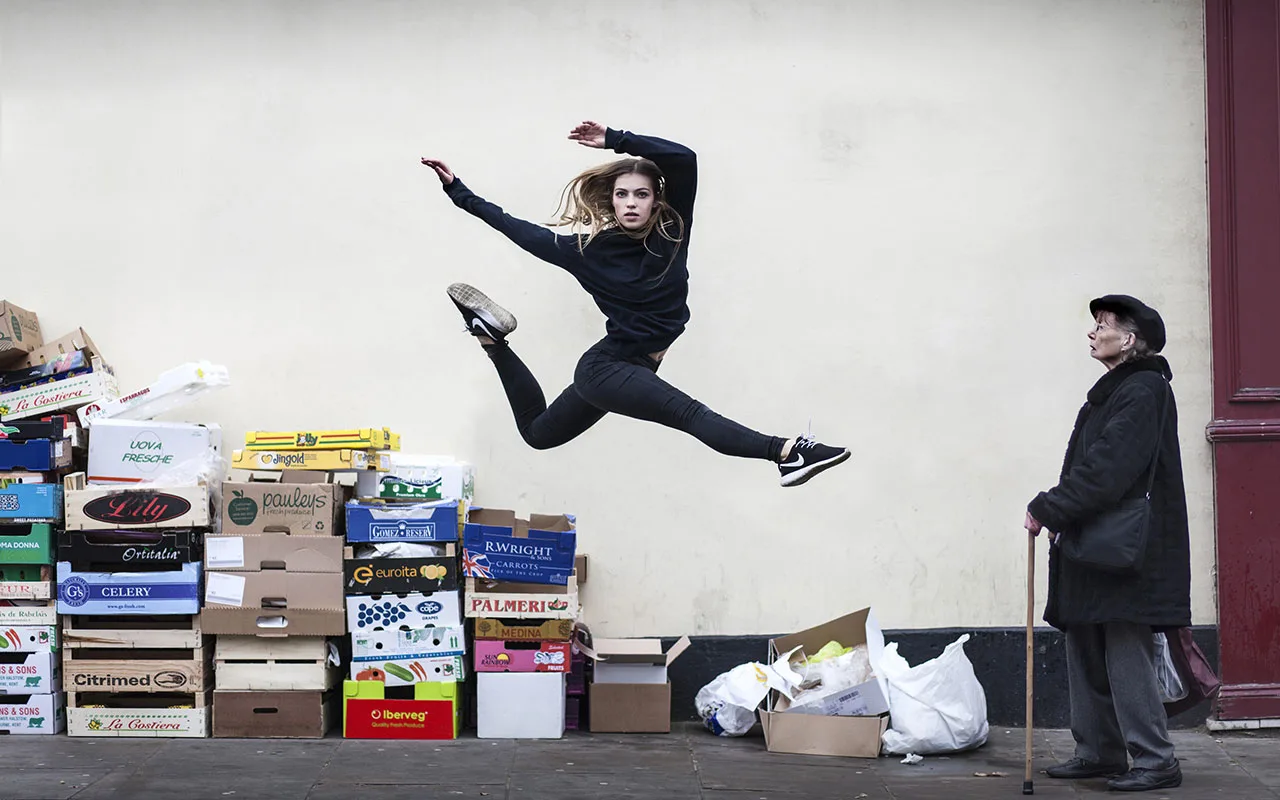

“The movement of a camera, the movement of a dancer, the movement of a city. All of these things have a harmony to them.” It’s this harmony that Jevan Chowdhury celebrates in Moving Cities, a video series in which international dancers perform in chaotic city settings.
From Prague to Paris, Dallas to Athens to Yerevan (Armenia, obvs), Jevan invites his subjects to perform in front of imposing buildings, at subway stations and while traffic rushes by. They’re mesmerizing scenes, as emphasized by the occasional passer-by drifting into frame to gawp at the spectacle before them.
With his captivating films, Jevan hopes to have created a new kind of postcard, one that’s not not about landmarks like Big Ben and the Eiffel Tower, but about people.
“I was interested in what happens when you film something without words, when you don’t have a narration,” Jevan explains. “Dance is very wordless, it’s very abstract.”
In the past, Jevan thinks the portrayal of dance on camera has been quite limited to straight-up filmed live shows and music videos where the dancers become “eye candy.” He sees things differently.
“I’m passionate about accessibility and the dance world is extremely inaccessible. There’s rules and protocols and codes and ethics – it’s like a secret society. I wanted to get inside this world and play with the rules a little bit.
“Dance is quite an attractive and mystical thing,” he continues. “It’s quite primordial, but a lot of people don’t get it. I thought by putting it in an environment that people move through everyday, I’d create the opportunity for a dialogue.”
Working with local dancers wherever he travels, Jevan takes the abstract notion of dance and brings it to the forefront of everyday life. “Moving Cities is about people,” he explains. “It’s human.” But it’s the fantastical element to his work that really draws viewers in.
Early in the project, Jevan read Italo Calvino’s Invisible Cities. The novel uses elaborate magical realism which inspired him to think about cities as “hyper-drama.” But he likes contrasting that idea with parts of the city which feel very normal.
Published in 1972, Invisible Cities is framed as a conversation between the aging emperor Kublai Khan and explorer Marco Polo. Unable to see his vast and expanding empire for himself, the emperor relies on the adventurer to intricately describe each city he conquers. It’s um, weird.
“I like the idea of filming in the most dumbfoundingly ordinary places, because actually that’s where we spend most of our time and there’s something interesting about the energy there,” he says. “You’re using real footage, real coverage, but you’re trying to dramatize it in some way.”
That’s where the dancers come in. They are removed from their usual controlled space and placed in the hustle and bustle of a busy city. “On the street, they’re not welcome,” Jevan explains. “It’s a very hostile environment, people want to get from A to B and you’re in their way.” But it’s a challenge the dancers embrace.
“Dancers are trained to use their bodies to communicate something, they spend their lives working with different choreographers trying to get a point across.” So even when they’re surrounded by traffic and Jevan asks them to improvise, he finds the dancers can naturally “seize the area and suspend themselves in that space.”
The unpredictability of the locations adds a sense of uncertainty to the narrative of Jevan’s films. He compares it to the adrenaline of being in a theater audience and works hard to communicate that through both lens and screen.
The dancers are not only driving a compelling narrative; they often act as a representation of the city itself. “Dancers are skilled at tapping into insightful and emotional responses in day-to-day environments,” Jevan explains.
This really shines through in Moving Cities Athens. Jevan and his team were in the city as it grappled with the huge crisis which crippled the Greek economy. It was a huge tipping point for Athens, and while the team had no intention of producing a political piece of work, a sense of “history in the making” infiltrates the film.
“It came through in their dance,” he says. “They weren’t going to stand there and joyfully tap dance, they were going to express themselves through their artform. It became a very solemn but inspirational journey through the way people felt there and then.”

